Pune Same Day Delivery on orders before 6 PM.
I forget the password
I'm new client.
Create an account
0in cart
Pune Same Day Delivery on orders before 6 PM.
The timeless grace of Paithani Banarasi Silk Dupattas lies not just in their exquisite weave but in the vibrant colors that tell their own unique stories. A beautiful blend of Maharashtrian Paithani artistry and Banarasi silk opulence, these dupattas are perfect for festive wear, weddings, or simply elevating everyday ethnic attire. In this post, we explore 21 dazzling colors of Paithani Banarasi Silk Dupattas, each rich in tradition, elegance, and character. Scroll through to find your perfect shade!
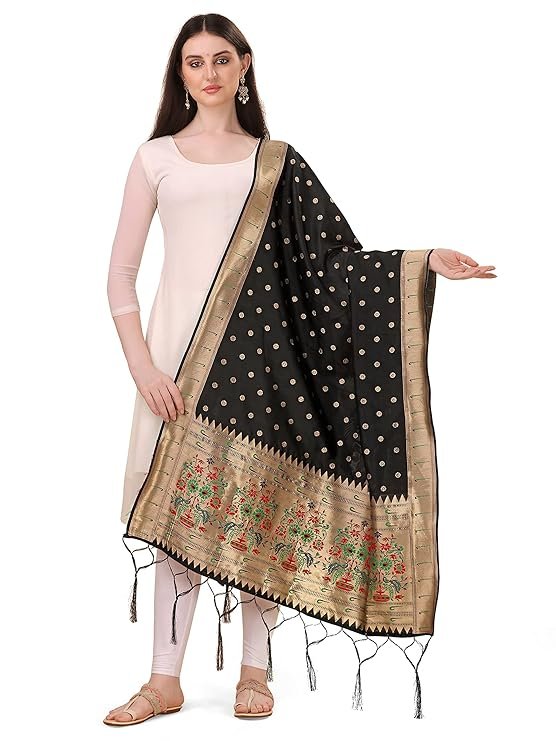

2. Burgundy
Rich and regal, the burgundy dupatta radiates vintage glamour. This deep wine tone perfectly complements traditional ensembles and adds a luxurious touch to any ethnic look.
3. Dark Green
The dark green shade brings out the royal essence of Paithani artistry. Symbolizing prosperity and balance, it’s ideal for festive gatherings and traditional celebrations.

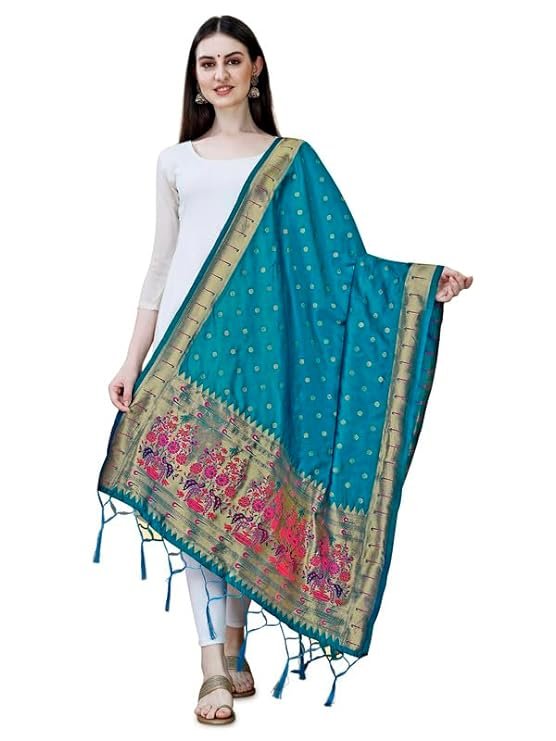
4. Firozi
Light and breezy, the firozi dupatta offers a refreshing burst of color. With its serene tone and vibrant silk shine, it’s perfect for daytime functions and springtime events.
5. Gold
A gold Paithani dupatta is the epitome of grandeur. The shimmer of pure silk combined with metallic undertones creates a radiant look fit for brides or anyone wanting to make a statement.

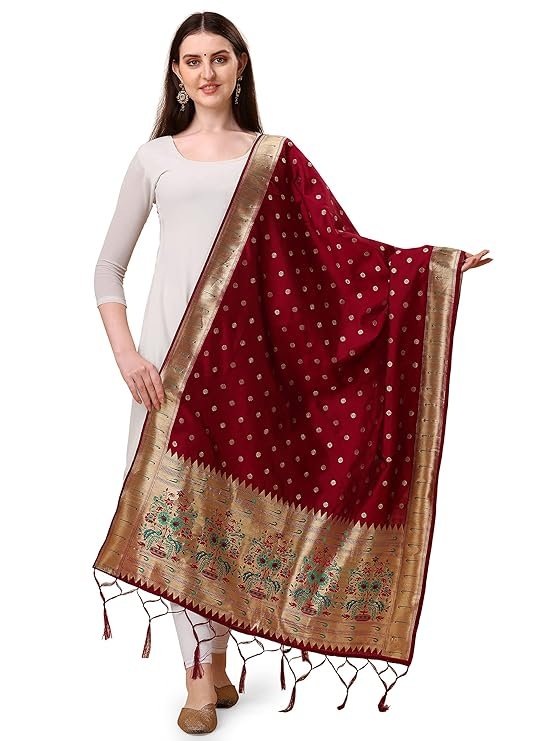
6. Maroon
Deeply rooted in Indian tradition, maroon is always in vogue. This color adds warmth and richness, making the dupatta an ideal match for ceremonial and festive wear.
7. Mehndi Green
Earthy and elegant, mehndi green brings a touch of nature to the silk canvas. It pairs wonderfully with beige, mustard, or cream outfits and is perfect for Haldi and Mehndi functions.

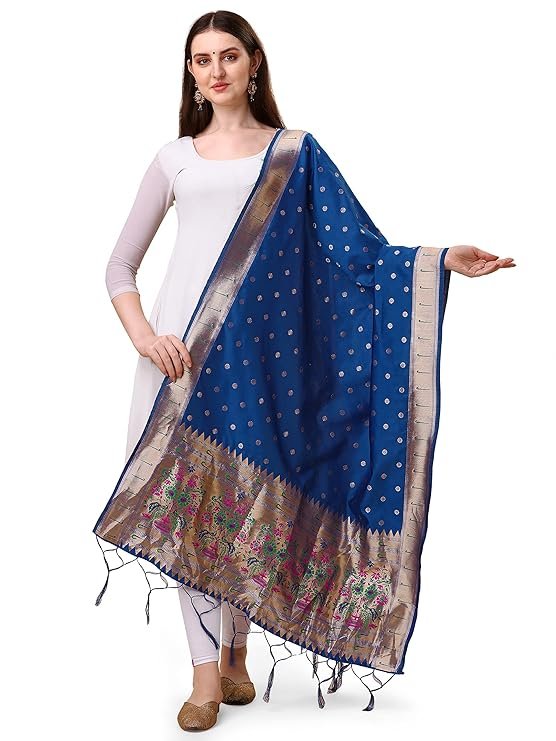
8. Navy Blue
Bold and beautiful, the navy blue Paithani Banarasi dupatta is a perfect blend of tradition and modern style. Its depth adds drama to your look without overpowering it.
9. Orange
Bright and auspicious, orange dupattas exude energy and joy. Whether it’s a day event or a festive gathering, this color lights up your look with vibrancy.


10. Parrot Green
Playful and peppy, parrot green adds a lively twist to the traditional weave. This eye-catching shade is ideal for spring and summer occasions.
11. Peach
Soft and subtle, the peach dupatta is a delicate expression of grace. Its pastel tone works beautifully with both gold and silver jewelry, perfect for daytime festivities.
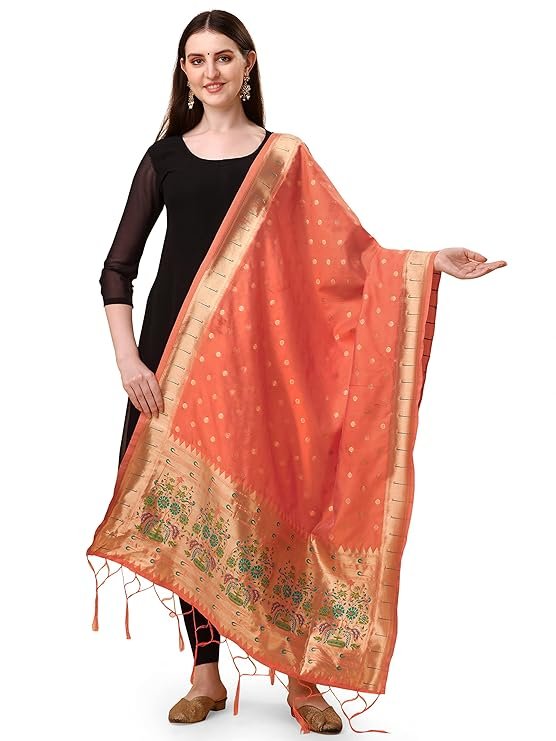
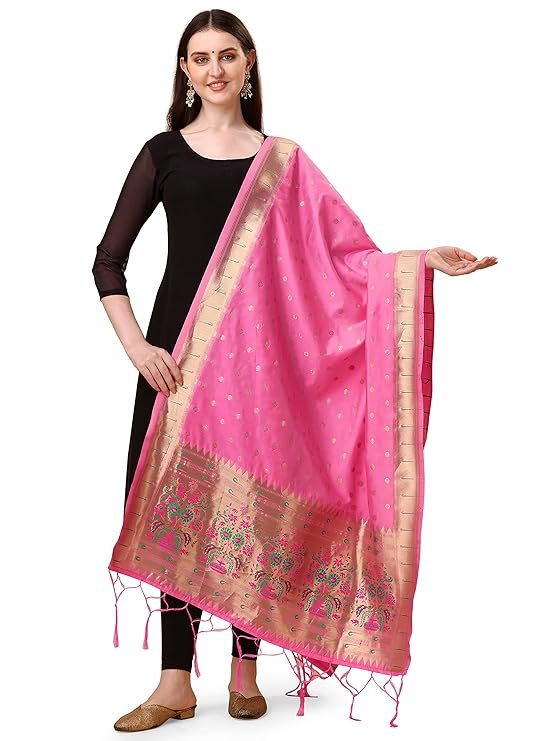
12. Pink
Feminine and festive, pink is a color that never goes out of style. The combination of zari work on a pink backdrop brings a sweet elegance to ethnic wear.
13. Pista Green
Cool and classy, pista green offers a muted elegance that stands out in a subtle way. It’s a great pick for those who love minimalism with a hint of tradition.
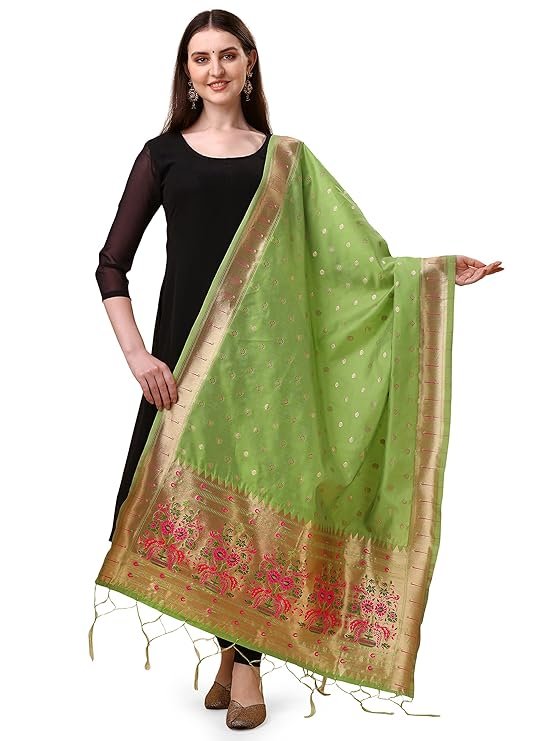

14. Purple
Associated with royalty and wisdom, the purple Paithani Banarasi Silk Dupatta is bold yet refined. It’s an excellent choice for weddings and evening events.
15. Rama
Unique and modern, rama color bridges the gap between tradition and trend. Its jewel tone stands out beautifully when paired with neutral outfits.
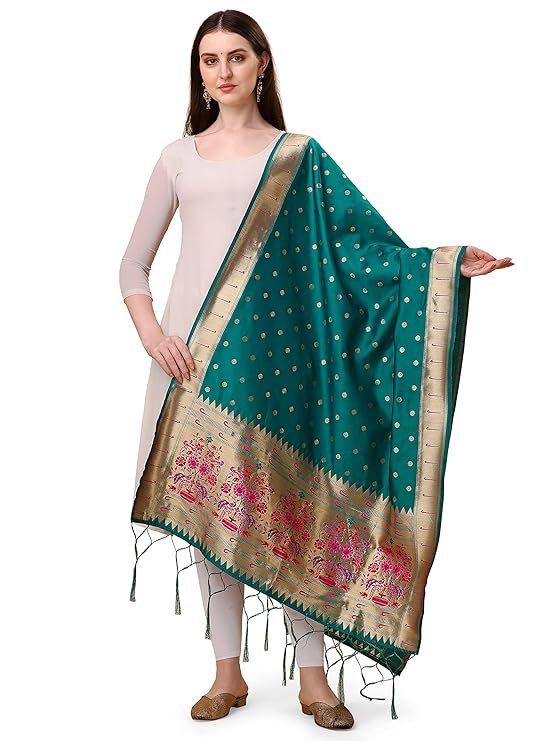

16. Rani Pink
Bright, bold, and full of festive spirit, rani pink is made for celebrations. This vibrant shade instantly uplifts your attire and is loved across generations.
17. Royal Blue
A true classic, royal blue embodies elegance and depth. This shade is perfect for creating a majestic ethnic look, whether paired with a lehenga or kurta.
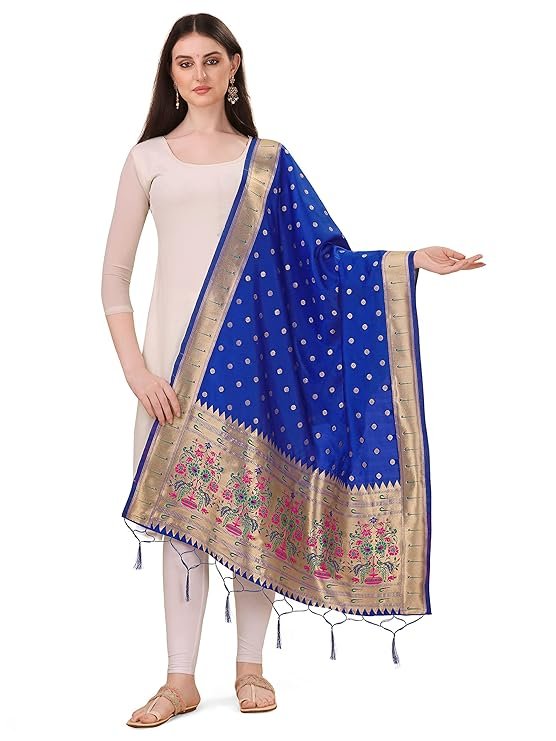
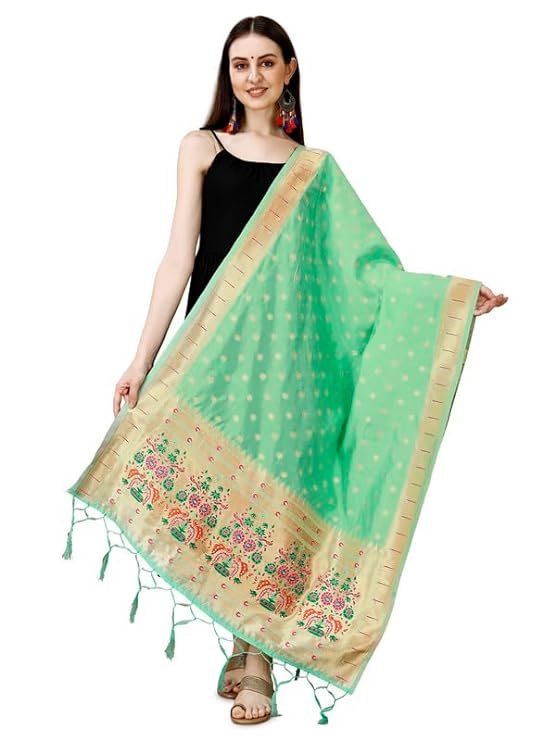
18. Sea Green
Fresh and graceful, sea green brings in a cool calmness with a luxurious sheen. It’s a great choice for summer weddings and breezy outdoor occasions.
19. White
Pure and pristine, the white dupatta is a symbol of simplicity and serenity. When woven with golden zari, it becomes an ethereal accessory fit for any season.


20. Yellow
Sunny and cheerful, yellow adds a splash of happiness to any outfit. It’s a popular choice for pre-wedding functions and traditional pujas.
21. Red
Bold and beautiful, red is a color of passion, power, and tradition. A red Paithani Banarasi Silk Dupatta instantly transforms any look into a bridal or festive masterpiece. It’s a must-have for every woman who loves making a striking style statement.

Conclusion:
From serene whites to striking reds, and royal blues to vibrant greens, each color of the Paithani Banarasi Silk Dupatta brings a distinct mood and timeless appeal. Whether you’re looking for an heirloom piece or a splash of color for your next occasion, this collection promises unmatched elegance and cultural richness—woven into every thread.




In the world of Indian ethnic fashion, few fabrics speak of luxury and legacy like silk. Among the most regal of them all is the Paithani Banarasi Silk Dupatta—a breathtaking blend of two of India’s most celebrated weaving traditions. Rich in history, color, and craftsmanship, this dupatta is more than an accessory—it’s a story woven in silk.
The Fusion of Two Royal Legacies
The Paithani weave, originating from Maharashtra, is known for its vibrant colors and intricate motifs inspired by nature—like peacocks, lotuses, and vines. On the other hand, Banarasi silk from Varanasi boasts Mughal-inspired floral designs and exquisite zari work in gold and silver threads.
The Paithani Banarasi Silk Dupatta brings these two traditions together, resulting in a fabric that is rich in heritage, elegance, and beauty. Each dupatta is a labor of love—handwoven over days or even weeks.
Why Choose a Paithani Banarasi Silk Dupatta?
How to Style It
Final Thoughts
The Paithani Banarasi Silk Dupatta is not just an addition to your wardrobe—it’s a legacy you carry. With every thread, it tells a tale of heritage, artistry, and timeless beauty. If you’re looking to invest in a piece that transcends trends and seasons, this is it.
Shop Now
Explore our exclusive collection of handcrafted Paithani Banarasi Silk Dupattas and bring home a piece of India’s woven glory.